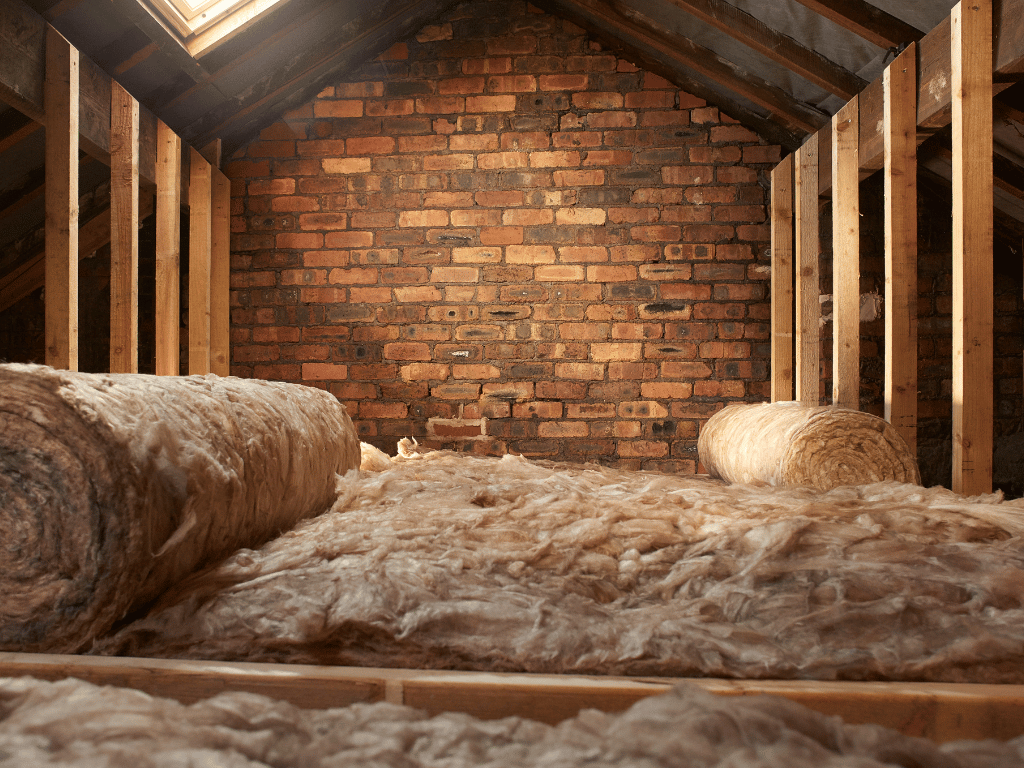The Best Insulation Options for Your Home
There is no one size fits all when it comes to insulation. Before you begin, there are several things you’ll need to determine.
In this article, we’ll discuss some popular types of insulation, and the factors you need to consider when deciding the best options for your home.
How to choose the best insulation for your home
The factors that influence your decision include:
- Climate/location: It is important to consider your climate and where you live so that airflow can be managed in your home.
- Project scope: Some insulations require wall removal. However, spray foam, blown-in fiberglass and cellulose can be applied with a hose using no structural modifications.
- Budget: Costs vary by material and method.
- DIY or professional? Some insulation options can be done by homeowners. Others require professionals.
Different types of insulation
There are four types of insulation that are commonly used in homes. Each type has its own benefits, but not all options will work for you. Let’s discuss these different types of insulation to determine which will benefit you the most.
Spray foam insulation
Spray foam is the easiest way to insulate your home without major construction. It’s a chemical-based product that you mix at home and then spray it using a special sprayer. Spray foam is a great choice for cold climates because of its ability to penetrate tight spaces.
Here are some of the pros and cons of spray foam insulation:
Pros
- High R-value is a measure of heat transfer resistance.
- Water resistance and vapor barrier are excellent to protect against weather events
- Resistant against mold
- Resistant against insects
- Both suitable for older and newer homes
- Ideal for sealing small crevices
Cons
- Higher prices for labor and materials than other options
- It is very difficult to install yourself
Fiberglass insulation
Fiberglass is the most commonly used insulation in homes. It is made up of very fine glass fibers. You can find it in rolls, loose fill, rigid boards, as well as specialized duct insulation.
Fiberglass installation costs can range from $1,000 up to 2,400. However, if you choose to DIY, the material costs only $0.30 up to $1.50 a square foot.
You can find fiberglass rolls in all major home improvement stores. To install, simply push them between the wall structure or joists. This will increase the R-value of your home greatly.
Now, here are a few pros and cons of fiberglass:
Pros
- Extraordinary for reducing heat loss
- Fire-resistant qualities
- If homeowners have the necessary DIY skills, they can install.
- Insulation companies can do a quick and easy job of installing insulation.
- Affordable
Cons
- Fiberglass can pose a danger if it is not properly handled or inhaled
- Spray foam in colder climates is less effective than spray foam
- Sometimes, you will need to take down walls in order to install rolls
Cellulose insulation
Less known than our previous two, cellulose is thick and dense. Cellulose is an eco-friendly choice because it comes from plants.
Let’s look at the pros and cons of cellulose insulation:
Pros
- You can settle into the spaces and obstructions of walls and attics
- Affordable
- Loose-fill cellulose is easy to fill without tearing down walls
- Repels vermin and insects
Cons
-
Sometimes, hot or cold air can be transferred through thermal bridges that are formed when it settles or compresses over time
-
It takes a while to dry because it absorbs moisture
- There is a greater risk of mold and mildew with insulation materials than with other types
Mineral wool insulation
Mineral wool, which has a higher R value than fiberglass insulation, is known for its remarkable benefits for sealing and quieting your home.
The pros and cons of mineral wool insulation are:
Pros
-
Many times, these items are made with 30% recycled materials
- Mineral wool has three times the density as fiberglass and blocks out noise pollution
- It is fire resistant and can slow down fire spread in homes.
- Its hydrophobic properties prevent it from absorbing moisture, which can lead to mold or mildew.
- Mineral wool is made with stronger batts and will not flop as much as fiberglass.
- Mineral wool batts are extremely stiff and can be held in place without the use of wires or staples.
Cons
- Less expensive than fiberglass
- Available in different sizes
- Installation can be challenging

Home Insulation Comparison
There are many types of insulation that can make your home more comfortable and more efficient. However, there are some that will give your home an edge depending on your budget and needs. Check out the top insulation stars for different categories.
Mineral Wool
Best for
- Safety
- Soundproofing
Mineral wool is the best choice if safety is your top priority. You’ll enjoy extra security if you live in a home with children.
It is also a natural soundproofing material that provides sound-blocking properties that reduce outside noise pollution. This is especially beneficial for multi-family homes like condos.
Cellulose
Best for
- Eco-friendliness
- Pest Control
- Ceilings, unfinished attic floors, and open wall cavities
Cellulose is a plant matter-based product that can help you save energy and be eco-friendly. It is easy to blow in and has a high R-value.
It also contains boric acid, an insect repellent, is an exceptional choice to stop insects from entering your home.
Finally, insulation made from blown-in cellulose is ideal for insulating difficult-to-reach areas.
Fiberglass
Best for:
- Those on a budget
- Warm climates
Fiberglass insulation is the most cost-effective insulation available, with an average cost of $0.30 and $1.50 each square foot.
It’s also an excellent option to keep heat out and won’t settle over time. Fiberglass is suitable for dry climates because of its fire resistance properties.
Spray Foam
Best for:
- Return on investment
- Humid climates
Spray foam insulation can help homeowners save up to 20% a year on their energy bills.
In addition, Spray foam is great for humid conditions as it forms a durable barrier and protects against moisture.
Final Thoughts
No matter whether you’re hiring a professional, or doing it yourself, it’s important to make an informed decision when choosing the best insulation for your home. Make the right choice for your home and you’ll be lowering those utility bills in no time!

